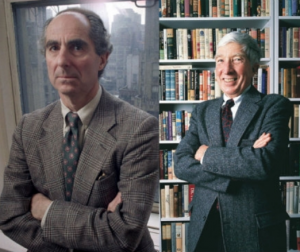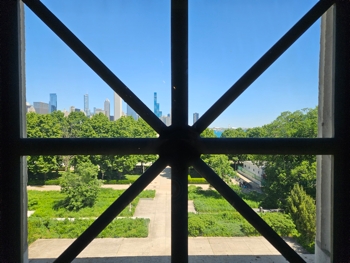“A Century of The New Yorker” exhibition will open at The New York Public Library on February 22, 2025, City Life Org reported. The exhibition “showcases the historic transformations” of one of America’s iconic and most distinguished magazines.
 Displays will include founding documents, rare manuscripts, photos, cover and cartoon art, and artifacts on loan from other institutions–all intended to take visitors “behind the scenes of the making of one of the United States’s most important magazines,” according to City Life Org.
Displays will include founding documents, rare manuscripts, photos, cover and cartoon art, and artifacts on loan from other institutions–all intended to take visitors “behind the scenes of the making of one of the United States’s most important magazines,” according to City Life Org.
The New Yorker transferred its extensive archive and records to The New York Public Library in 1991. That archive—2,500 boxes (1058 linear feet)—is one of the Library’s largest collections.
Highlights from the exhibition include:
- The prospectus for The New Yorker (1924)
- Original artwork for the first issue of The New Yorker by Rea Irvin (1925)
- W.H. Auden’s handwritten draft of “Refugee Blues” (1939)
- John Updike’s handwritten assignments for Talk of the Town (1950s)
- Original signed art by Helen Hokinson (1941)
- The New Yorker type identification and style guide (1981)
- Correspondence between William Shawn and John Hersey related to “Hiroshima” (1946)
- The typescript draft of “In Cold Blood” by Truman Capote, with revisions and deletions by William Shawn (1965)
- Hannah Arendt’s original typescript manuscript of “Eichmann in Jerusalem” (1963)
- Cynthia Ozick, “The Fallibility Rag,” poem dedicated to New Yorker grammarian Eleanor Gould (1987)
- A mock-up of the first New Yorker website and other 21st-century artifacts
- Original film featuring current and recent writers, editors, and staff exploring the history, legacy, and future of The New Yorker.
Members of the John Updike and Philip Roth societies who attend the joint conference in New York City in October 19-22, 2025 will have time to head to Fifth Avenue and 42nd Street to explore the library and the exhibition.

 Ditum reminded readers of the impetus behind Updike’s writing of the novel: “Jack Kerouac’s On the Road came out in 1957, and without reading it, I resented its apparent injunction to cut loose; Rabbit, Run was meant to be a realistic demonstration of what happens when a young American man goes on the road—the people left behind get hurt. There was no painless dropping out of the Fifties’ fraying but still tight social weave.”
Ditum reminded readers of the impetus behind Updike’s writing of the novel: “Jack Kerouac’s On the Road came out in 1957, and without reading it, I resented its apparent injunction to cut loose; Rabbit, Run was meant to be a realistic demonstration of what happens when a young American man goes on the road—the people left behind get hurt. There was no painless dropping out of the Fifties’ fraying but still tight social weave.” course, played an important role for a lot writers—no need to list them all here.) John Ashbery enjoyed a nice cup of tea and classical music when he wrote, which was usually in the late afternoon. Charles Simic enjoyed writing when his wife was cooking. Eudora Welty could write anywhere—even in the car— and at any time, except at night when she was socializing. Flannery O’Connor could only write two hours a day and her drink was Coca Cola mixed with coffee. Simone de Beauvoir wrote from 10AM-1PM and from 5-9PM. Louise Glück found writing on a schedule “an annihilating experience.” A. R. Ammons wrote only when inspiration hit—he compared trying to write to trying to force yourself to go the bathroom when you have no urge. Anne Sexton took up writing after therapy sessions. Jack Kerouac had various rituals at different times—one was writing by candlelight, and another was doing “touch downs” which involved standing on his head and touching his toes to the ground. Ernest Hemingway and Virginia Woolf wrote standing up. Wallace Stevens composed poems while walking to work. Gabriel García Márquez listened to the news before writing. Amy Gerstler sometimes listens to recordings of rain while writing. I tried that once, and the rain put me into a deep and dreamless sleep.”
course, played an important role for a lot writers—no need to list them all here.) John Ashbery enjoyed a nice cup of tea and classical music when he wrote, which was usually in the late afternoon. Charles Simic enjoyed writing when his wife was cooking. Eudora Welty could write anywhere—even in the car— and at any time, except at night when she was socializing. Flannery O’Connor could only write two hours a day and her drink was Coca Cola mixed with coffee. Simone de Beauvoir wrote from 10AM-1PM and from 5-9PM. Louise Glück found writing on a schedule “an annihilating experience.” A. R. Ammons wrote only when inspiration hit—he compared trying to write to trying to force yourself to go the bathroom when you have no urge. Anne Sexton took up writing after therapy sessions. Jack Kerouac had various rituals at different times—one was writing by candlelight, and another was doing “touch downs” which involved standing on his head and touching his toes to the ground. Ernest Hemingway and Virginia Woolf wrote standing up. Wallace Stevens composed poems while walking to work. Gabriel García Márquez listened to the news before writing. Amy Gerstler sometimes listens to recordings of rain while writing. I tried that once, and the rain put me into a deep and dreamless sleep.”

 “In the small town of Eastwick, Rhode Island, three women — Alexandra, Jane, and Sukie — discover they have magical powers after their marriages end.
“In the small town of Eastwick, Rhode Island, three women — Alexandra, Jane, and Sukie — discover they have magical powers after their marriages end. On the American Literature public Facebook group, Milan Milan Stankovic posted a consideration/comparison of two “Great American Writers” whose works offer “profound insights into American society, culture, and individual psychological and individual psychological complexities”: John Updike and Philip Roth.
On the American Literature public Facebook group, Milan Milan Stankovic posted a consideration/comparison of two “Great American Writers” whose works offer “profound insights into American society, culture, and individual psychological and individual psychological complexities”: John Updike and Philip Roth. This National Windows Day (that’s a thing?), renowned photographer Jill Krementz shared some of the photos she took of
This National Windows Day (that’s a thing?), renowned photographer Jill Krementz shared some of the photos she took of 
 As part of their feminist classics series which looks at influential books, The Conversation featured an article on
As part of their feminist classics series which looks at influential books, The Conversation featured an article on